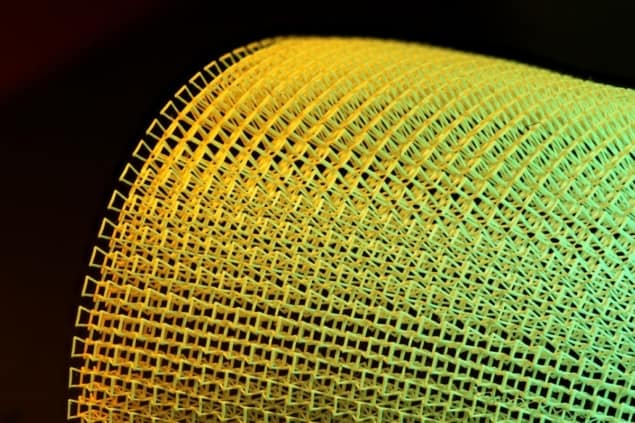
“Hey, Cortana.” “Hey, Alexa.” “Hey, Lyra.” “Hey, Robin.” “Hey, Siri.”
If you’ve ever owned a quartz watch, received an ultrasound exam in a doctor’s office, or enjoyed a voice-controlled personal assistant like Siri, you have used piezoelectricity.
Researchers at Virginia Tech and Pennsylvania State University have now developed a method for 3D printing piezoelectric materials. These 3D printed structures look like sheets of tiny combs. Their properties are tunable, or directly assigned, ushering in a new era for medical devices and materials (Nature Mater. 10.1038/s41563-018-0268-1).
Piezoelectric effect production
If you stretch, squeeze or apply stress or pressure to a piezoelectric crystal, the structure will deform, pushing some atoms closer together and others further apart. Net electrical charge appears, and to rebalance themselves, the positive and negative charges align at the poles (opposite, outer faces) of the crystal. An electrical potential is created and can be harnessed for a variety of applications. This process is reversible, meaning that voltage can also be converted into mechanical energy.
Today, we rely on the piezoelectric effect for operating transducers, circuits and other systems, but the range of piezoelectric properties available for new applications remains limited, says Xiaoyu (Rayne) Zheng, senior author of the Nature Materials study. Crystal orientations are few, materials are brittle, and development and processing require a clean room.
To address these limitations, Zheng and his research team developed an additive manufacturing technique for piezoelectric materials. Rather than chemically synthesizing novel piezoelectric materials, their technique uses existing materials and a modified desktop 3D printer.

Put simply, these new, 3D printed piezoelectric materials are tunable, Zheng explains. “Unlike conventional piezoelectrics where electric charge movements are prescribed by the intrinsic crystals, the new method allows users to prescribe and program voltage responses to be magnified, reversed or suppressed in any direction,” he says.
Zheng’s team fabricated the piezoelectric materials through a three-stage process. First, they dispersed a surface-treated powder in a light-sensitive resin until a solid matrix formed. Then they exposed a thin deposit of resin to a patterned beam of light over and over to build a lattice. Finally, they exposed the lattice to intense electric fields to ensure that the poles aligned and responded collectively.
The future of piezoelectric materials
The tunability of 3D printed piezoelectric materials also enables multi-functionality. Zheng envisions their use in intelligent materials and devices, particularly in medicine. Adaptable stents in blood vessels will regulate and sense blood pressure changes. Self-sensing synthetic skin will record and detect pressure, pulse, joint movement, voice, breathing rate and motion. Wearables will sense dynamic pressure changes in the hands and feet, while ultrasound transducers will help medical personnel visualize tissues in different ways.
The advantages of 3D printed piezoelectric materials were precisely what made the project difficult, says Zheng. The research group faced two primary challenges: modelling the materials and their responses in tensor space, and making sure that the materials were printable.
The research team is confident that their results will hold as they explore novel applications for their 3D printed piezoelectric materials. They used simulations and experiments to verify their theory, designs and materials using classical piezoelectric crystal geometries, and verified the expected behaviours and responses of the 3D printed materials experimentally.
What’s next for the research team? Designing appropriate piezoelectric sensitivities, developing methods for 3D electronic integration, and investigating more biologically friendly piezoelectric materials for embedded device applications.



